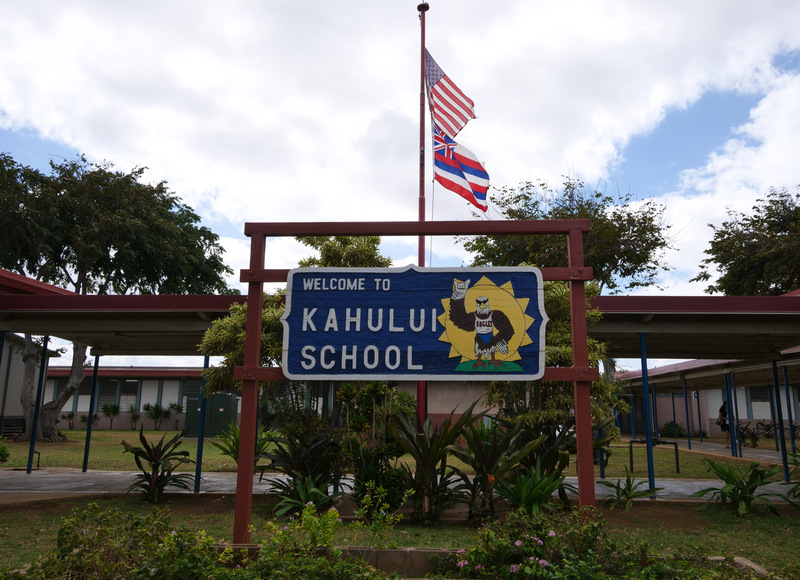This post is Part 1 of a three-part series on a session about collective teacher efficacy presented by Sue Forbes, principal, and Stacey Hankinson, academic coach, of Kahului Elementary in Kahului, Hawaii. Forbes and Hankinson presented this content at the 2023 ASCD Annual Conference. Make sure to catch the full story in Part 2 and Part 3.
“The number one thing you can do to impact student learning is to have collective teacher efficacy,” said Sue Forbes, principal of Kahului Elementary School, during her session, “Aloha! Supporting Teachers for Success in Hawaii” at the 2023 ASCD Annual Conference in Denver. Forbes presented alongside Stacey Hankinson, academic coach at the school.
Kahului Elementary School, located on the north side of Maui in Hawaii, is the largest elementary school on the island with 860 students — spanning preschool through fifth grade — and 70 teachers. Like most schools across the country, Kahului Elementary battled issues related to the pandemic, including extreme shortages in staff and substitutes; the highest number of positive COVID-19 cases on the island and for all elementary schools across the state; and chronic absenteeism, owing to quarantining. During the 2021-22 school year, 63% of students were absent 15 or more days.
Despite these challenges, the school was successful. Students showed growth and hit learning targets. Data from the 2021-2022 StriveHi Index, the state of Hawaii’s school accountability and improvement system, showed a 10% increase in proficiency in English-language Arts; an 11% increase in proficiency in math; and a 15% increase in proficiency in science. The number of third-grade students reading near, at or above grade level improved by 17%.
Forbes and Hankinson attribute the student achievement to the teacher support program they have in place. Based on the research of John Hattie, the program emphasizes teacher collective efficacy as the key to improving student achievement.
Setting a vision
Kahului Elementary’s success begins with its vision: All students will demonstrate at least one year of growth in reading, writing, math and science every school year. Forbes underscored that the vision applies to all students.
“Notice that our vision is for all students — it is not increasing proficiency by 5%,” she said. Forbes explained how this works with students who have special needs. If they are in the general education classroom — if they are cognitively able to perform — that one year growth is based on grade-level standards. If they are not able to perform, it’s based on their annual Individualized Education Program.
“When you have a vision for all students — and it’s at least one year growth — it doesn’t matter where the student is. It’s equitable,” she said.
Reaching the goal
Kahului’s strategy for fulfilling its vision is based on a set of goals — desired outcomes — and core values. For goals, the school aims to significantly increase student growth and proficiency in every classroom for the long term; avoid the need for costly RTI programs that provide only short-term results; build a schoolwide culture of growth; and achieve Collective Teacher Efficacy.
Their core values act as a compass, establishing parameters and giving them guidance in their actions and plans.
- Aloha: We love, care for and respect ourselves and each other, and we build positive relationships.
- Kuleana: We take responsibility for doing our part, and we work together as a team.
- Imi na’auao: We seek enlightenment, we are resourceful and open to new ideas, and we persevere to meet the challenge.
Together these goals and core values outline the pathway for how the teachers and students will function as they strive toward the vision.
Fixing learning loss
As schools resumed in-person learning after pandemic shutdowns and recognized the scope of students’ learning loss, they turned to the common methods for tackling it: Response to Intervention, tutoring, pullout programs, resource teachers for math and reading, and technology platforms. Forbes cautioned school leaders against using these tactics.
“Traditionally what we’ve been doing is circumventing teachers,” she said. “You are sending a message to your teachers — whether they’re part of it or not — saying ‘It’s great that you taught them during the day but it wasn’t quite good enough.’ This is the exact opposite of collective teacher efficacy.”
Teacher collective efficacy puts teachers at the center of the growth model, according to Forbes. Teachers work together for a common purpose, believing they can create change and then fueling that belief with evidence that it’s working.
“Students are at the heart of everything we do, so that’s our purpose,” she said. “But teachers are on the front lines. They have the most direct impact on students.”
Read Part 2 to get the 4-point plan for the support program and Part 3 to see the classroom visit feedback and coaching cycle.
Kanoe Namahoe is the director of content for SmartBrief Education and Business Services. Reach her at [email protected]
